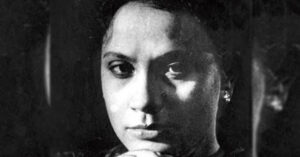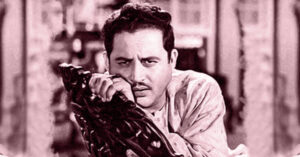We Do Need Sex Education
The popular Netflix series Sex Education portrays young high-school kids struggling with the idea of sex and identity, a struggle that is beautifully and often hilariously showcased. It covers everything from bullying to harassment to understanding how to be mature about sex and how to treat people with respect no matter what their gender is.
I refer to this show to emphasise on the fact that sex education is not only about the physical or biological aspects of sex. Much of it has to do with psychological aspects, like exploring, understanding and accepting one another’s sexuality, among other things.
Our cultures may be quite different, but the way the show tackles a wide range of issues is admirable. It made me wonder if that’s one of the areas our city schools need help in developing.
I did a bit of research and asked some questions to the faculty as well as students of a few well-reputed schools of Kolkata with regard to the idea of imparting sex education.
When I was in school five years back, the concept of sex education wasn’t explored much. As we grew up, the idea of different sexualities, gender preferences, or sexual orientations was not a topic that was openly conversed about. I spoke to Damayanti Mukherjee, Principal, Modern High School for Girls — my school — about the current scenario. It gave me great joy to hear that those avenues of discussion are now encouraged. She spoke of how from Class III and IV, students are taught about “good touch and bad touch”. From Class VI, there is a specific curriculum that focuses on analysing current affairs with students. Through this, conversations about sexual abuse and harassment, how to protect oneself etcetera also take place. There is a conscious attempt to imbue concepts of gender sensitivity and varying sexual orientations in students. However, there are far greater strides to be taken in this field, in her opinion.
When I was in school five years back, the concept of sex education wasn’t explored much. As we grew up, the idea of different sexualities, gender preferences, or sexual orientations was not a topic that was openly conversed about. I spoke to Damayanti Mukherjee, Principal, Modern High School for Girls — my school — about the current scenario. It gave me great joy to hear that those avenues of discussion are now encouraged.
“Instead of starting with shockwaves, we have chosen to begin with creating ripples. Hopefully, with time, we can carry forward this conversation where it ideally ought to reach,” Principal Mukherjee told me.
I went on to speak to a few students from three reputed missionary schools of the city. One was an all-boys institution, while the other two were all girls.
“In our all girls’ convent school, sex education was an absolute no-no. Even discussing sexual/menstrual health was a taboo. I do hope schools focus more on investing in sex education, instead of policing girls for the lengths of their skirts,” said Roshni Ghosh, a former student of an all-girls convent.
In Utsho Ray’s boys’ school, sex education was to be found in the classrooms of teachers who were comfortable with students – not as a part of the curriculum. Even then, there was a perceptible lack of sensitisation, which led to either ignorance or obsession. “I still remember the classic all-boys’ school preoccupation with contraceptives. Condoms were perhaps more unmentionable than sex,” said Ray.
“Queries regarding sex education are something that I come across quite often as a 15-year-old. Though our formal education system doesn’t have specific periods dedicated to it, sessions with experts of the subject have been organized over the years. While these are helpful, I will definitely appreciate something more permanent. We all know how important an impact sex education has in our later lives,” said Rishita Raj.
I also spoke to a teacher of a relatively new co-educational institution. On questioning her regarding their system surrounding sex education, she dubbed it a “New Age” school. “The basic biological and physical aspects of sex are covered in the curriculum. I strongly believe, however, that the psychological aspects, especially the attitude towards sex, sexuality and gender sensitivity have a lot of room for improvement,” said Amita Prasad, a teacher at Indus Valley World School. Prasad spoke of the need to spread more awareness about menstrual hygiene at an even younger age. She said she wishes for a cohesive sex education programme for the entire school in the near future, varying according to the age groups.
It is clear that there is still far too much left to be desired when it comes to schools dealing with sex and sexuality in this city. Having said that, things have truly improved. Attitudes towards the idea of something called “sex education” have definitely warmed up. It can only get better from here.
Names of the faculty are real; names of students have been changed
Illustration by Suvamoy Mitra
Read in Bengali





